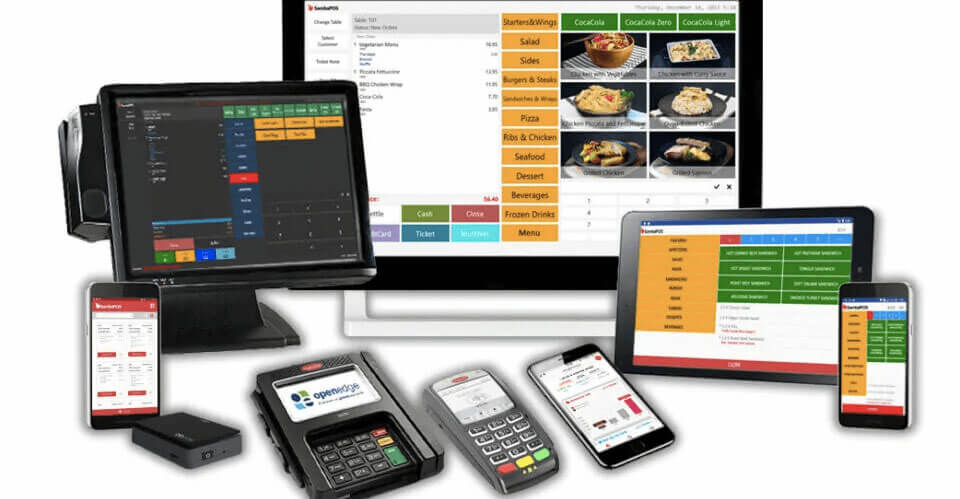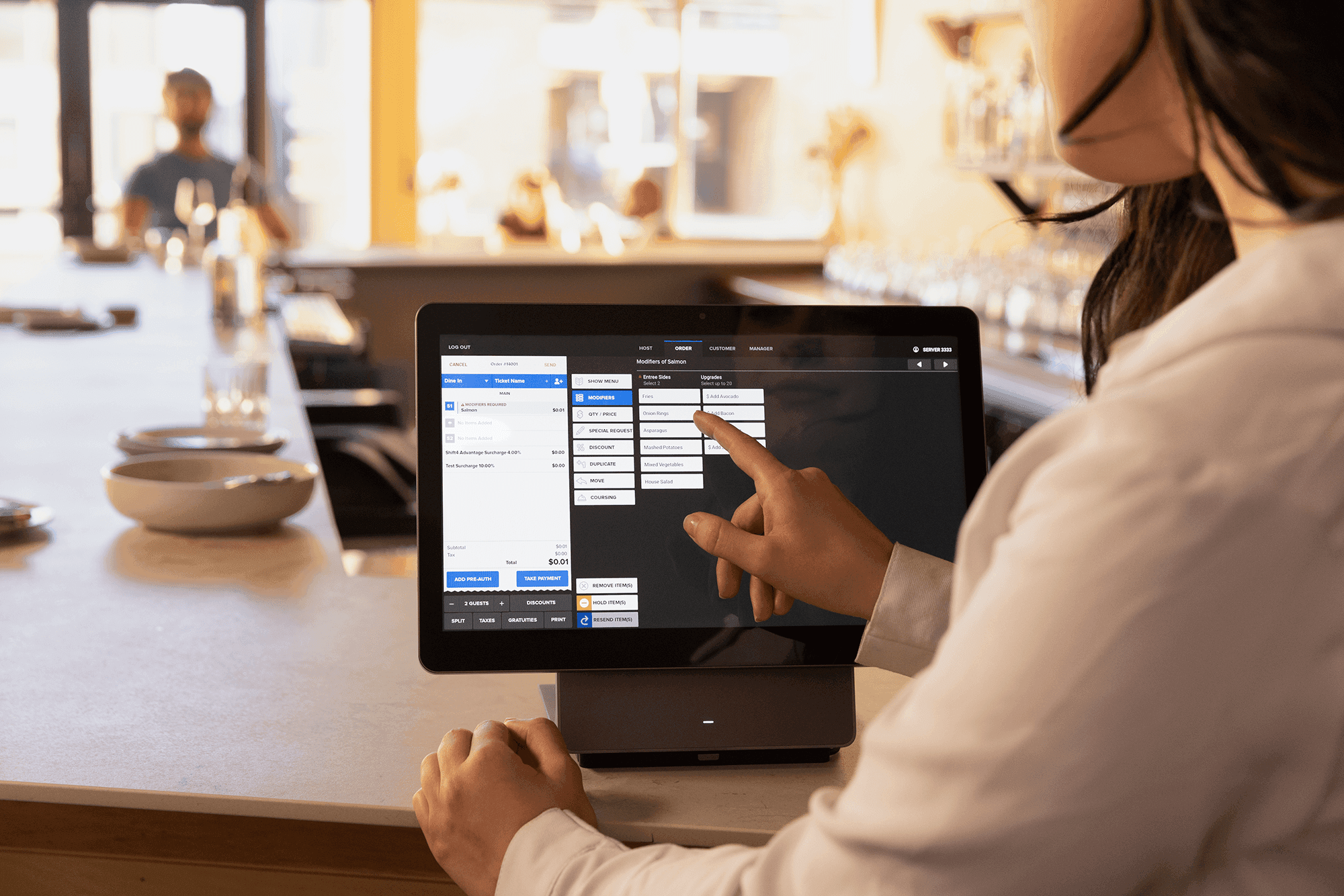How POS System Functions: A Comprehensive Overview for Entrpreneurs
A POS system functions as an essential device for modern-day businesses, integrating various parts to streamline operations. It includes hardware like barcode scanners and software application offer for sale tracking. This system not just processes deals but additionally takes care of inventory and analyzes client habits. Comprehending its functionality can significantly affect a business's effectiveness and decision-making. What are the essential elements that add to this efficiency? Discovering these components uses useful understandings.
Comprehending the Elements of a POS System
A Point of Sale (POS) system is made up of numerous essential elements that interact to facilitate purchases and handle service operations. At its core, the hardware consists of tools such as a cash register, barcode scanner, invoice printer, and settlement terminal, all crucial for processing sales (Restaurant POS Software). The software program element handles stock, sales tracking, and customer information, providing valuable insights for service decisions.Additionally, data sources keep deal documents and client info, making certain data stability and security. Network connectivity makes it possible for real-time updates and access to cloud-based services, improving operational efficiency. User user interfaces, created for ease of usage, allow team to browse the system quickly, minimizing training time. With each other, these parts develop a natural system that simplifies the sales process, improves consumer solution, and help in reliable administration of organization resources. Understanding these parts is essential for organization proprietors seeking to enhance their POS systems
How Sales Purchases Are Processed
When a consumer decides to buy, the sales purchase starts a collection of methodical steps within the POS system. First, the cashier inputs the items being bought, which are checked with a barcode visitor or by hand entered. This activity fetches item information, consisting of prices and appropriate tax obligations, from the system's database.Next, the consumer exists with the overall quantity due. The POS system then refines the payment, whether via cash money, bank card, or mobile repayment techniques. For digital settlements, the POS firmly interacts with repayment processors to accredit and verify the transaction.Once the settlement is confirmed, the system generates an invoice, which can be published or sent out electronically. This receipt offers as evidence of acquisition for the consumer. The deal information is taped in the system, guaranteeing exact sales documents and economic tracking for the business.
Supply Administration and Tracking
Reliable inventory monitoring and tracking are necessary elements of a POS system, as they ensure that organizations maintain suitable stock degrees and reduce disparities. A durable POS system enables for real-time inventory updates, showing sales and returns instantly. This allows entrepreneur to check stock degrees properly, making certain that prominent items are easily available while avoiding overstocking of less preferred products.Additionally, progressed POS systems use attributes such as automatic supply informs and reorder recommendations, enhancing the purchase procedure. Barcoding and RFID modern technology enhance precision in tracking stock activity, minimizing human mistake. Substantial coverage devices offer understandings into supply turnover rates, aiding organizations make informed choices concerning buying and item offerings. Ultimately, effective supply management through a POS system not just improves functional efficiency yet likewise enhances consumer fulfillment by making sure item availability.

Assessing Consumer Information and Insights
Client information evaluation serves as an effective device for organizations utilizing a POS system. By gathering and analyzing deal information, organizations can uncover useful Get More Information understandings concerning consumer habits and preferences. This analysis allows them to determine buying trends, peak shopping times, and popular products, consequently notifying stock decisions and advertising and marketing strategies.Additionally, organizations can segment their customer base, enabling for customized marketing initiatives that accommodate specific demographics or buying habits. Recognizing client commitment patterns likewise helps in developing targeted promotions and incentives programs.The data obtained from a POS system can likewise reveal insights into consumer comments, allowing services to make educated choices pertaining to item offerings and service renovations. Eventually, leveraging customer data efficiently can boost the overall purchasing experience, foster client complete satisfaction, and drive profits development.
Advantages of Executing a POS System
Executing a POS system offers countless benefits that can considerably improve business procedures. To start with, it enhances transaction procedures, lowering delay times and enhancing consumer fulfillment. By automating sales processes, companies can decrease human error and assurance exact record-keeping. Additionally, a POS system offers important data analytics, allowing proprietors to track sales patterns and stock levels in real-time. This insight sustains notified decision-making, assisting to enhance stock administration and advertising strategies.Moreover, several POS systems incorporate with other business tools, such as audit software, streamlining economic monitoring. Improved staff member monitoring features, such as tracking hours and performance, further add to functional efficiency.Lastly, the application of a POS system can bring about enhanced income through enhanced client experiences and strategic insights, ultimately fostering company growth and sustainability.
Regularly Asked Concerns
What Kinds of Businesses Can Profit From a POS System?

Exactly how Much Does a POS System Normally Price?
The cost of a POS system generally varies from a couple of hundred to numerous thousand bucks, relying on features, hardware, and software program - Restaurant POS Software. Companies should consider recurring costs for upkeep, assistance, and purchase like this processing when budgeting

Can I Incorporate a POS System With Existing Software?
Incorporating a POS system with existing software program is commonly feasible. Many systems supply APIs or built-in compatibility features, enabling services to enhance operations and boost capability by attaching different software application applications efficiently.
What Training Is Required for Personnel to Utilize a POS System?
Educating for staff to use a POS system usually includes understanding software application capabilities, processing deals, managing inventory, and handling client interactions - Restaurant POS Software. Practical demonstrations and hands-on practice improve proficiency and confidence in making use check it out of the system effectively
What Occurs if the Net Decreases While Using a POS System?
If the internet drops during POS system use, purchases may be disrupted. Several systems provide offline capacities, enabling standard operations to proceed, but full capability, including real-time supply updates, will certainly be limited.